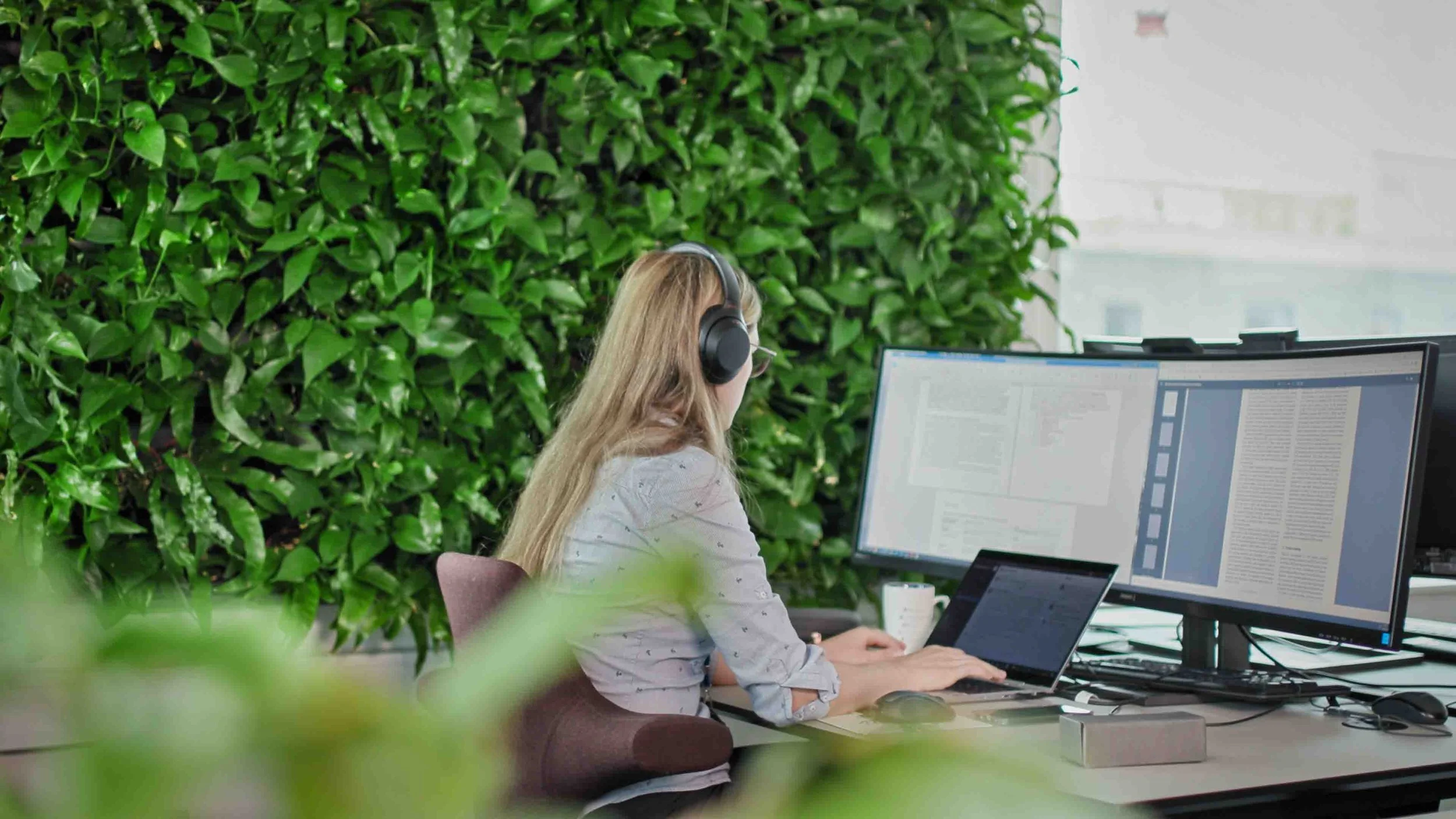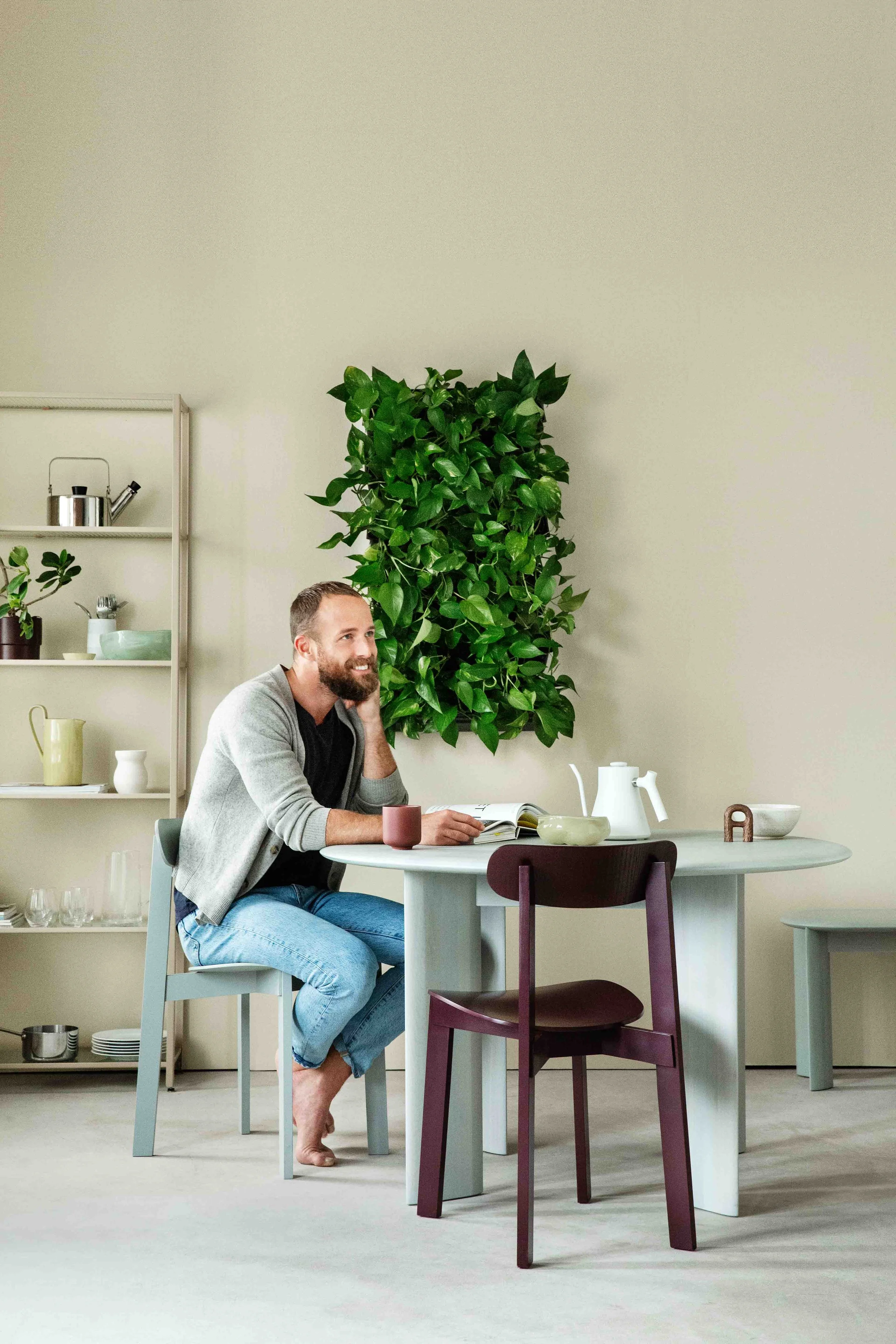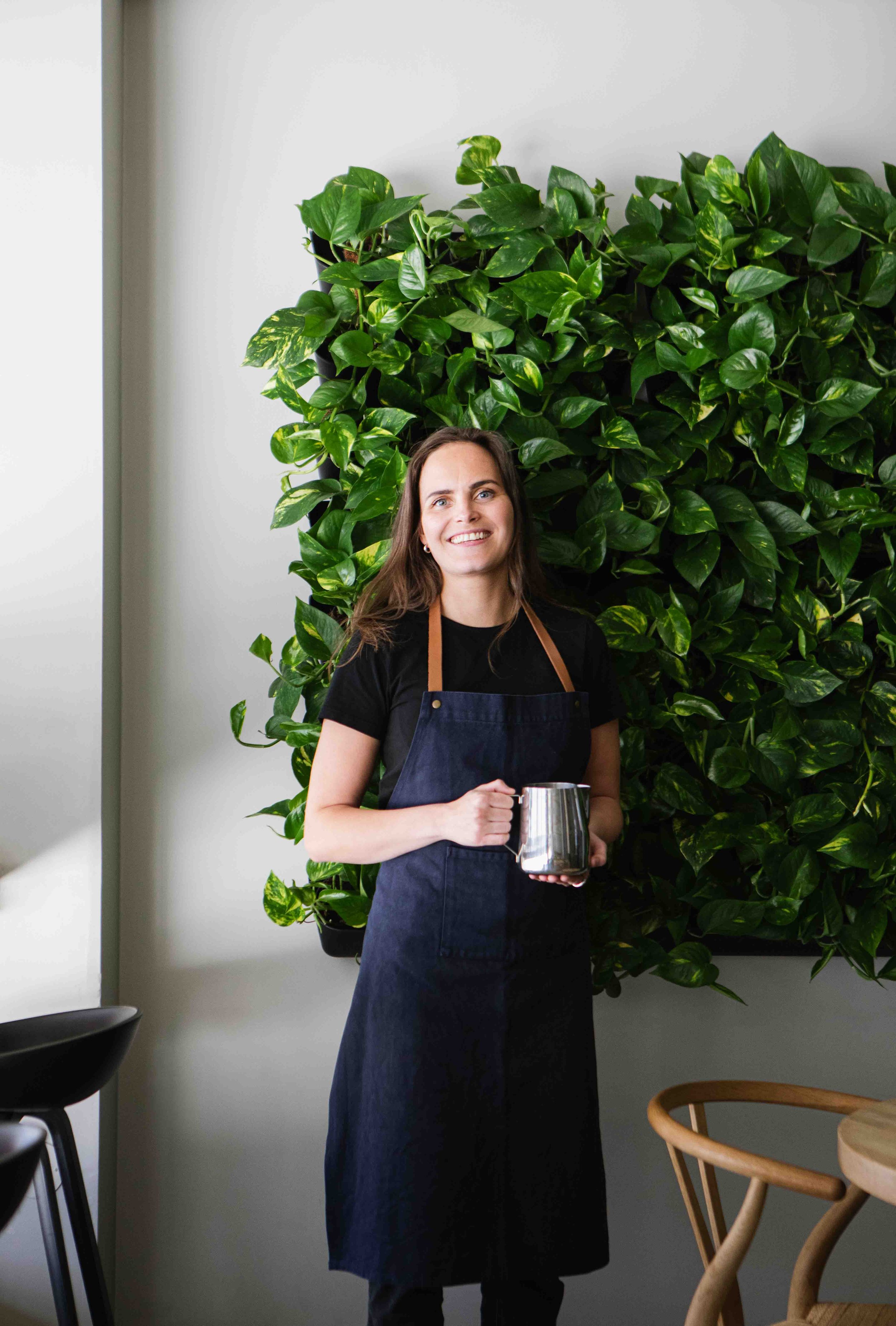Building on an earlier conversation we had in 2020 with a co-founder of Skogluft, we speak today with Morten Kvam, CEO of Skogluft. Not only does it sound beautiful and uplifting, in Norwegian it means “Forest Air”. We talk about how plants are essential to have in the built environment and how the main founder of Skogluft Bjorn Virumdal was a mechanical engineer and realised that biological models were needed to explain the effects of nature indoors. NASA had conducted some research on how astronauts would be affected by the lack of nature. After speaking with them to explore their findings Bjorn then conducted further scientific research to prove how different plants and different light affected people in different working environments. His research looked at three main aspects: the feeling of being awake, headaches and respiratory problems and he took readings before and after the intervention.
The results showed the positive effects of having nature indoors. Tiredness reduced by 40%, headaches reduced by 35% and concentration problems reduced by 16%. Morten says they have over 7.2kg worth of printed evidence that nature is good for us!
There is evidence that plants in a room may reduce the dust level of the air, as found by Lohr and Pearson-Mims (1996). The dust content of the indoor air is often too high and might irritate mucous membranes in the eyes and respiratory organs (throat, nose). When plants are healthy and are in your workplace, home, school or healthcare space, there is an increase in air humidity which may bind more of the dust, and as a result reduce some of the health complaints associated with dust (and maybe also pollen). The large leaf surface of plants probably promotes sedimentation of dust from the air, which will reduce the dust level. Just imagine if we place plants close to the computer – where both dust level and the level of static electricity is often high, we might see a reduction in irritations in respiratory organs. This could be really useful in healthcare environments, especially receptions and schools.
Feedback from users who have installed Skogluft say that one of the benefits is that acoustic levels really improve. They are also ideal in dentist waiting rooms, or anywhere you might feel stressed or anxious because the green walls create a feeling of calm. On the other side of the coin, there is a very large Skogluft wall in a library north of Oslo, who now want to implement it in all libraries in the city. We discuss how we could install green walls in university and study spaces. They have already installed many in the working spaces in Healthcare environments for the employees. If we think of all the halls, rest areas, outside treatment areas, receptions, and so on, there are many places we could implement green walls so many people receive the benefit.
Morten shared that the Skogluft Green Wall is a best-kept secret for one of the Norwegian football clubs who feel it gives them the advantage to compete and win games. It is important for that club to feel the vitality and life of nature, instead of the usual naked walls you get inside clubs.
The more plants you have the more positive effects you earn! For Skogluft, their plant of preference is the Golden Pothos, which research has shown that these are very positive and have a greater effect than other plants. One hypothesis is that they produce lots of chlorophyll per time unit per square inch. This is still a hypothesis, but it seems they are better than other green plants. Also, they are very robust, look good, and are easy to maintain year after year. They survive even if you forget to water them for a week or two!
We also talk about the importance of light. The positive effect of light reflecting on nature. “We are programmed to stay in nature, we have always been surrounded by plants and light together,” Morten says. “It makes people react more positively when we see light reflected on plants.”
In his magic brush of biophilia, he says we should be looking to install nature everywhere, and “just like toilets are compulsory in buildings so should nature be compulsory indoors everywhere.” I think I’ll be sharing that last thought many many times. It’s straightforward and simple to grasp - nature should indeed be compulsory in every building.
Skogluft creates living walls which are super simple to install and even has an app do you don’t kill the plants! We all have a choice when it comes to who we work with and the companies we represent. Morten tells us that while his background was not nature-based, he chose Skogluft because as a company they are making a difference to people’s wellbeing.
To find out more about Skogluft: https://www.skogluft.com
Have a listen to our the podcast we did with Stine Wettergreen way back in 2020 which this one today builds on that initial conversation! https://journalofbiophilicdesign.com/podcast-journal-of-biophilic-design/skogluft-forest-air
To buy a copy of The Journal of Biophilic Design visit our website www.journalofbiophilicdesign.com or from Amazon. If you like our podcast and would like to support us in some way, you can buy us a coffee if you would like to support us, thank you x
Credits: with thanks to George Harvey Audio Production for the calming biophilic soundscape that backs all our podcasts.
Did you know our podcast is also on Audible, Amazon Music, Spotify, iTunes, YouTube, Stitcher, vurbl, podbay, podtail, and most if not all the RSS feeds?
Facebook https://www.facebook.com/journalofbiophilicdesign/
Twitter https://twitter.com/JofBiophilicDsn
LinkedIn. https://www.linkedin.com/company/journalofbiophilicdesign/
Instagram https://www.instagram.com/journalofbiophilicdesign
To register your interest in attending our Biophilic Design Conference visit www.biophilicdesignconference.com



